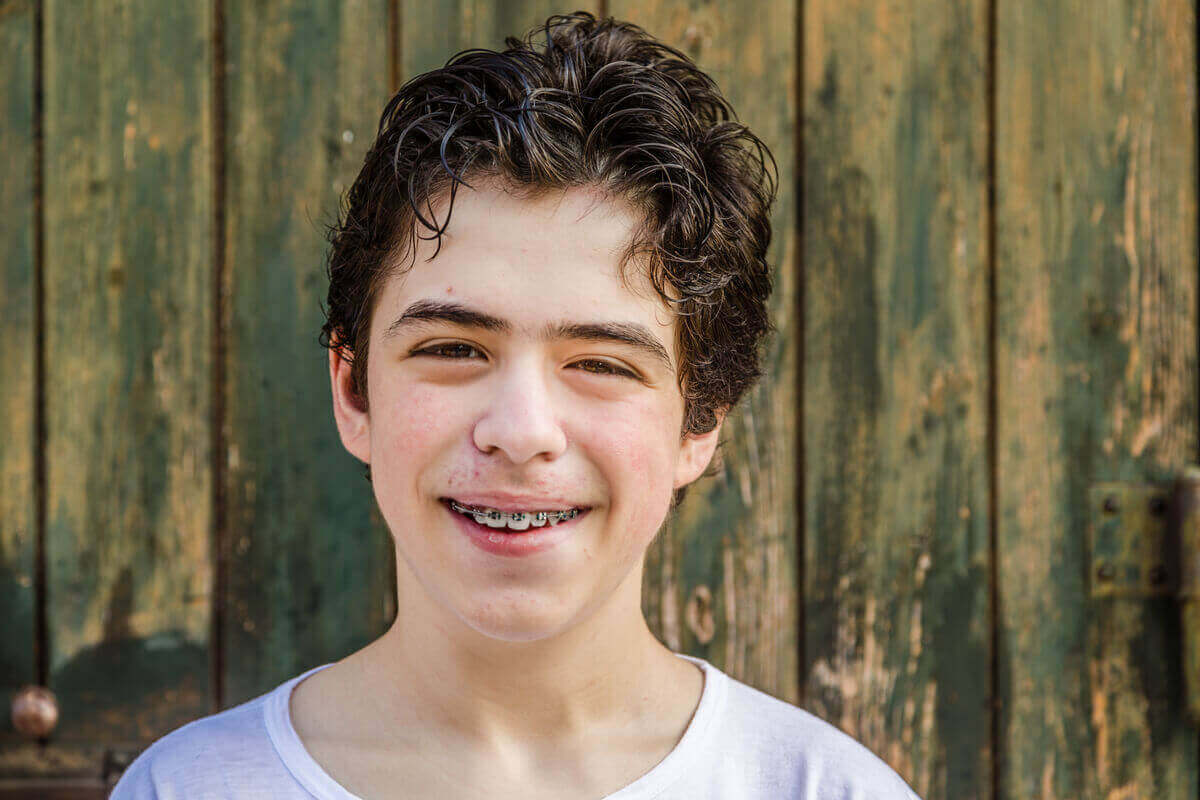Orthodontic treatment is a pivotal aspect of dental care for children, playing a crucial role in ensuring their oral health and proper dental alignment as they grow. This comprehensive guide will explore the various aspects of braces for kids, helping parents understand the benefits, options, and considerations involved in this important dental journey.
Understanding Braces for Kids
Braces are not just about creating a beautiful smile; they are essential for correcting a range of dental issues that can affect a child’s overall health and development. These issues may include overcrowded teeth, gaps, or misalignments that could influence the way a child eats, speaks, or maintains oral hygiene.
 Why Braces?
Why Braces?
Early orthodontic evaluation can identify whether your child’s teeth are growing correctly or if interventions like braces might be necessary to prevent more serious problems later.
Addressing these issues early can lead to shorter treatment times and less complexity as your child grows.
Types of Braces Available for Children
When considering orthodontic braces for children, there are several types that parents should be aware of:
- Traditional Metal Braces: The most prevalent form of braces, renowned for their robustness and efficacy, traditional metal braces comprise brackets affixed to each tooth. These are linked by a wire that the dentist adjusts regularly to direct teeth alignment.
- Ceramic Braces: Similar to conventional metal braces in design and function but made from ceramic materials, which are less visible against the teeth. These are popular among older children and teens who are conscious of the aesthetic appearance of braces.
- Invisible Braces: Typically suitable for older children and teenagers, invisible braces involve a series of clear, removable aligners that are custom-fitted to the child’s teeth. These aligners are less noticeable than metal or ceramic braces and can be taken out for eating and brushing.
Each type of braces offers unique advantages and can be tailored to the distinct needs and lifestyle of the child.
The Process of Getting Braces
Embarking on the journey of getting braces is a significant step in managing a child’s oral health. Here’s a detailed look at what this process entails:
- Initial Consultation: It begins with an initial appointment with a dentist, who will examine your child’s oral health and discuss the potential requirement for braces. This appointment typically involves a thorough examination of the child’s teeth, jaw, and facial structure to assess alignment and bite issues. The dentist may use panoramic X-rays or digital scans to get a complete view of the child’s teeth and underlying bone structure.
- Dental Impressions: If braces are deemed necessary, the next step will involve taking precise dental impressions of your child’s teeth. These impressions are crucial for creating a detailed treatment plan and for fabricating the orthodontic appliances that will be used.
- Developing a Treatment Plan: Based on the initial assessments and impressions, the dentist will develop a customised treatment plan. This plan outlines the type of braces recommended, the expected duration of treatment, and any preparatory work needed before the braces are fitted. For instance, if the child has baby teeth that have not yet fallen out, the timing of the treatment might need to be adjusted accordingly.
- Fitting the Braces: Once the treatment plan is set, the braces fitting can take place. This appointment is generally longer as each bracket needs to be precisely placed and secured on the child’s teeth. For traditional braces, the brackets are bonded to the teeth with a special dental adhesive and then connected with the orthodontic wire. For children receiving ceramic braces, the process is similar, though care is taken to ensure the ceramic brackets are securely attached due to their more fragile nature.
Throughout the process, it’s important for parents to support their child, especially in maintaining good oral hygiene to ensure the effectiveness of the orthodontic treatment and the health of the child’s teeth.
Duration and Monitoring of Treatment
How Long Do Children Typically Wear Braces?
The average duration that children wear braces can differ extensively depending on the complexity of the case and the specific orthodontic issues being addressed. Typically, the process can take anywhere from 18 months to 3 years, but this timeline can be influenced by several factors:
- Severity of Misalignment: The more severe the misalignment of the teeth or the upper jaw, the longer the braces may need to be worn. Complex cases requiring significant straightening of teeth or correction of the bite tend to extend the treatment duration.
- Age and Growth: Treatment can take longer in patients whose permanent teeth have not fully erupted. The dentist might need to wait for these teeth to emerge before final adjustments can be made.
- Patient Compliance: The effectiveness of the treatment is closely linked to how diligently the child wears their braces and follows the dentist’s advice. Regularly skipping wear or neglecting care can prolong the treatment.
 Regular Check-Ups and Adjustments
Regular Check-Ups and Adjustments
Orthodontic treatment requires regular check-ups and adjustments to ensure the braces are working as intended. These appointments are typically scheduled every four to six weeks and serve multiple purposes:
- Monitoring Progress: Each visit allows the dentist to monitor the progress of the teeth as they move into their desired positions. This is crucial for staying on track with the treatment plan.
- Making Adjustments: During these appointments, the dentist will adjust the brackets and wires to apply the correct amount of pressure on the teeth. This process is essential for guiding the teeth and jaw into proper alignment.
These regular interactions with the team are vital for maintaining the momentum of the treatment and handling any issues that might arise promptly.
Coping with Braces
Common Challenges and Solutions
Wearing braces can be challenging, particularly for kids who may experience discomfort or find maintenance demanding. Here are some common issues and effective strategies to manage them:
- Discomfort: It’s normal for a child to experience some discomfort after their braces are adjusted. Pain relievers approved by the dentist and soft foods can help alleviate this discomfort.
- Maintenance Challenges: Keeping braces and teeth clean is crucial but can be challenging. Using tools like orthodontic toothbrushes, water flossers, and floss threaders can make oral hygiene easier.
Supporting Your Child Through Orthodontic Treatment
Support from parents is critical in helping children cope with the demands of orthodontic treatment. Here are some tips for providing emotional and practical support:
- Encouragement and Motivation: Regularly remind your child of the benefits of the treatment, such as the prospect of having straight teeth. Celebrate milestones in the treatment to keep morale high.
- Practical Support: Assist younger children with their oral hygiene tasks until they can manage on their own and ensure they attend all appointments.
By understanding these aspects of braces treatment, parents can better prepare to support their children through this transformative journey. The goal is to achieve not just aesthetic improvements but also functional benefits that contribute to overall dental health and well-being.
 Ready to Transform Your Child’s Smile? Contact Us Today!
Ready to Transform Your Child’s Smile? Contact Us Today!
Orthodontic treatment with braces can be a transformative experience for children, not only improving their smile but also significantly enhancing their oral health and function. By understanding the various types of braces available, including traditional metal braces, aesthetic ceramic options, and innovative invisible aligners, and the detailed process involved, parents can better prepare themselves and their children for this crucial dental journey.
Whether opting for metal braces, ceramic options, or invisible aligners, our ultimate goal remains the same: to ensure your child emerges with a healthy, straight smile that boosts their confidence and well-being.
If you’re ready to explore orthodontic options for your child or have any questions about the process, don’t hesitate to contact our clinic at (02) 8806 0790. Our dedicated team is committed to guiding you and your child every step of the way towards achieving a brighter, healthier smile that they can be proud of.
References
How Do Braces Work to Straighten Your Teeth? | Healthline
https://www.healthline.com/health/how-do-braces-work
What are Dental Braces? | News Medical
https://www.news-medical.net/health/What-are-Dental-Braces.aspx


 Why Braces?
Why Braces? Regular Check-Ups and Adjustments
Regular Check-Ups and Adjustments Ready to Transform Your Child’s Smile? Contact Us Today!
Ready to Transform Your Child’s Smile? Contact Us Today!